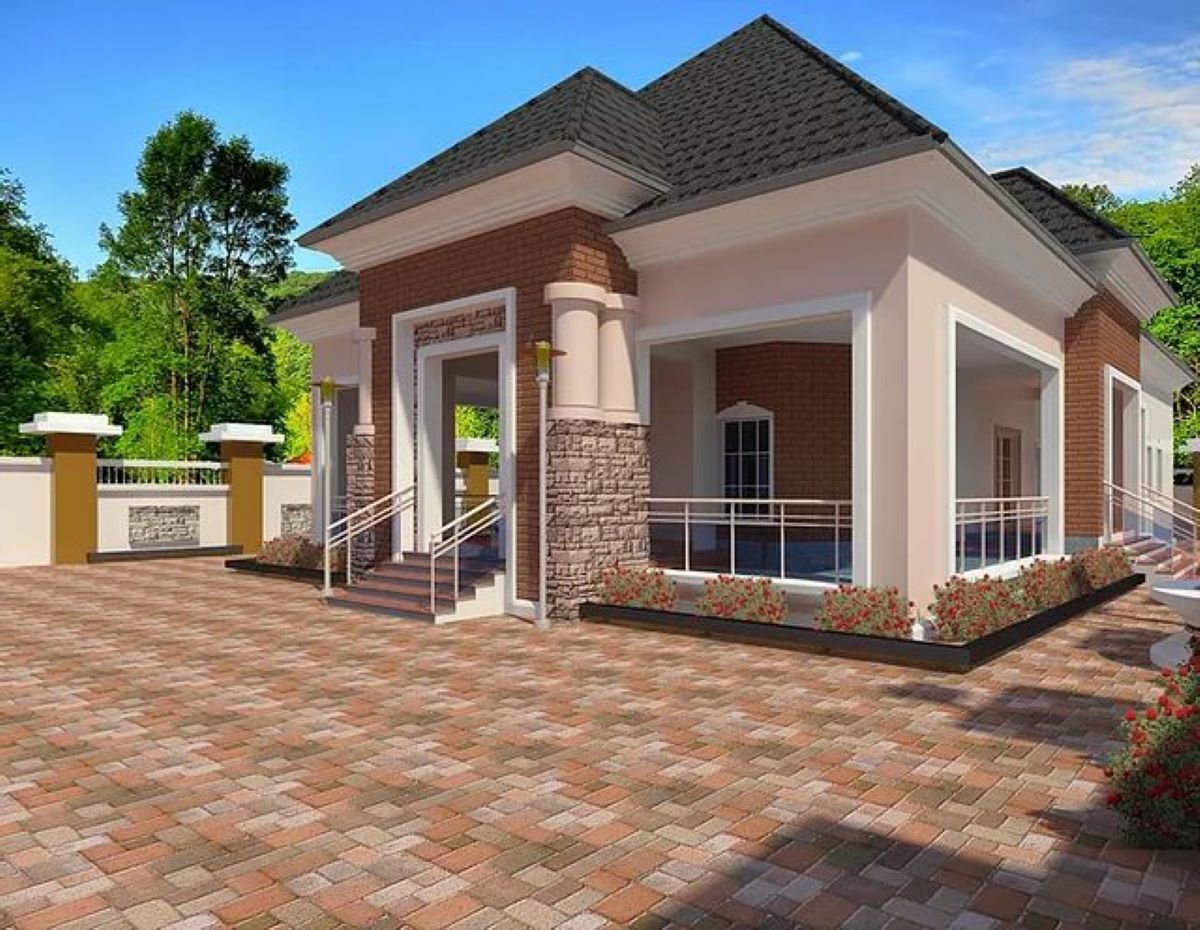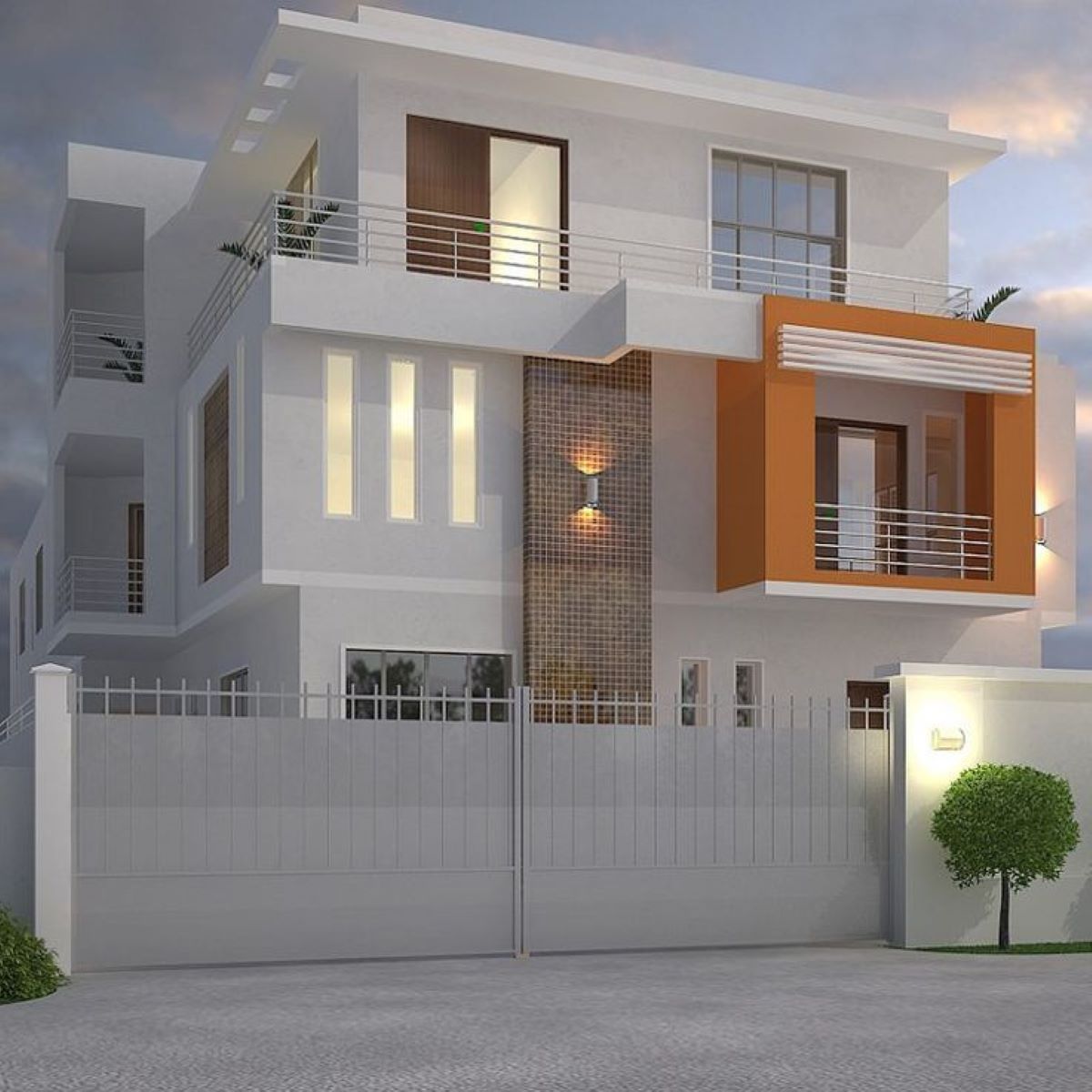As we journey through Nigeria’s dynamic real estate landscape, we can witness a remarkable evolution in house design.
Modern house designs in Nigeria represent a fusion of our rich cultural heritage with contemporary stylistic elements.
This trend is pivotal for numerous reasons. It’s a reflection of Nigeria’s cultural identity, seamlessly blending local traditions with modern aesthetics.
As Nigeria progresses through rapid urbanization, these designs cater to the growing demands of our urban populace.
From my perspective as a Senior Accountant and Real Estate Investor, I appreciate the emphasis on sustainability in modern Nigerian architecture.
It’s not merely a trend; it’s a responsible approach that aligns with global environmental concerns. This shift also marks Nigeria’s participation in global design trends, showcasing our architectural prowess.
Crucially, this evolution in design enhances living standards, focusing on functionality, comfort, and luxury. Modern house design in Nigeria, therefore, transcends mere aesthetics.
It’s a blend of cultural preservation, practicality, and sustainability, mirroring the socio-economic strides our nation is making.

Elements of Modern House Design
Modern house designs are known for their blend of simplicity, functionality, and elegance. These designs are characterized by distinct features in both interior and exterior aspects.
Below are some key features of modern house designs:
Interior Features
- Open Floor Plans: This design connects rooms such as the living, dining, and kitchen areas, creating a more social and airy space. For example, properties in Mixta’s Lakowe Lakes Golf & Country Estate often feature these open layouts.
- Simplistic Colors: Neutral colors like whites, off-whites, browns, and greys are common, enhancing the elegance and visual spaciousness of the interiors. This color palette is evident in many of Mixta’s residential projects.
- Industrial Elements: Combining industrial and natural elements is a hallmark of modern design. Features like exposed beams are common in Mixta’s designs, adding a unique aesthetic to the living spaces.

Exterior Features
- Simplicity in Design and Form: Modern house plans by Mixta often exhibit clean lines and simple geometric shapes, as seen in the RDP (Residence De la Paix) Lekki, Lagos.
- Large Windows: Many of Mixta’s properties, such as those in Lakowe Lakes Golf & Country Estate, feature large, floor-to-ceiling windows, often encompassing entire walls to allow ample natural light.
- Flat or Low-pitched Roofs: This feature is typical in modern homes, including those developed by Mixta, offering a sleek and contemporary look.
Mixta’s various properties, including Lakowe Lakes Golf & Country Estate, exemplify these modern design features, showcasing the latest trends in Nigerian housing.
These designs not only reflect modern architectural aesthetics but also cater to the practical needs and preferences of homeowners, blending form and function seamlessly.

Modern Designs versus Old Designs
| Aspect | Modern Design | Old Design |
| Space Utilization | – More efficient use of space with open floor plans. Flexible living spaces are adaptable to various needs. | – Often segmented rooms lead to potential underutilization of space. Fixed layout with less adaptability. |
| Natural Light | – Large, often floor-to-ceiling windows allow more natural light, reducing electricity usage. | – Smaller, fewer windows limit natural light, increasing dependence on artificial lighting. |
| Energy Efficiency | – Incorporation of energy-efficient features like smart thermostats, and solar panels. Better insulation and ventilation systems. | – Less focus on energy efficiency, potentially leading to higher utility costs. Older insulation and heating/cooling systems. |
| Aesthetics | – Sleek, minimalistic design with a focus on simplicity and elegance. Often integrates the latest trends and technologies. | – Traditional aesthetics which may or may not align with current trends. Classic designs that can be timeless but may also feel outdated. |
| Maintenance | – Newer materials and technologies often require less maintenance. Smart systems can predict and prevent issues before they escalate. | – Older materials and systems might require more frequent and costly maintenance. Lack of smart technology for predictive maintenance. |
| Cost of Construction | – Can be higher due to the use of modern materials and technologies. Long-term cost savings through energy efficiency and lower maintenance costs. | – Generally lower initial construction costs. Potential for higher long-term costs in maintenance and utilities. |
Cost-Effectiveness of Modern Design
Modern design, while potentially higher in initial construction costs, tends to be more cost-effective in the long run.
The emphasis on energy efficiency, lower maintenance requirements, and the use of durable materials contribute to significant savings over time.
Features like better natural light reduce electricity usage, while smart home technologies can lead to more efficient management of resources.
Additionally, the flexible and open floor plans in modern designs can adapt to changing needs, potentially reducing the need for future costly renovations.
Overall, the initial investment in modern design can yield substantial long-term benefits, both financially and in terms of living quality.
Factors to Consider when Picking a House Design
When selecting a house design, several factors come into play, each crucial in ensuring that the chosen design meets your needs, preferences, and lifestyle.
Including affordability in the context of Here are some key factors to consider:
- Affordability: This is paramount. Consider the total cost, including construction, finishing, and long-term maintenance. Mixta properties, for instance, offer a range of options that cater to different budgets, providing affordable yet modern and stylish homes.
- Lifestyle and Needs: Your house should complement your lifestyle. Whether you need a home office, a large kitchen, or an outdoor space, ensure the design accommodates your daily activities and family dynamics.
- Location: The location of your home can dictate certain design aspects. Mixtavest properties are located in various environments, each offering unique design features suitable for its surroundings, such as urban settings or more tranquil, green environments.
- Future Flexibility: Consider how your needs might change over time. A flexible design that can adapt to life changes, such as family expansion or aging in place, can be a wise choice.
- Energy Efficiency and Sustainability: Look for designs that are energy-efficient and environmentally friendly. Mixta’s focus on modern designs often includes features like solar panels and energy-efficient appliances, which are not only good for the planet but can also save money in the long run.
- Aesthetics and Personal Style: Choose a design that reflects your personal style and aesthetic preferences. Mixta’s range of properties often showcases contemporary designs that blend style with functionality.
- Resale Value: Consider the potential resale value of the property. Well-designed homes in good locations, like those offered by Mixtavest, tend to maintain or appreciate over time.
- Community Amenities: Especially in developments like those by Mixta, check for amenities like security, parks, sports facilities, and community centers which can enhance the living experience.
- Construction Quality and Materials: Ensure that high-quality materials and construction standards are used, as this impacts the longevity and safety of your home. Mixta properties are known for their quality construction and use of premium materials.
- Regulatory Compliance: The design should comply with all local building codes and regulations. This is usually a given with reputable developers like Mixta but always worth verifying.
Future Trends in Modern Housing Design in Nigeria
1. Sustainable and Eco-Friendly Designs
As environmental concerns continue to grow, more Nigerian homes are likely to incorporate sustainable design elements.
This includes the use of renewable energy sources like solar panels, rainwater harvesting systems, and energy-efficient appliances.
Green building materials and techniques that reduce the carbon footprint will also become more prevalent.
2. Smart Home Technology Integration
The use of technology in homes is set to increase, with smart home systems becoming a standard feature in modern housing design.
This includes automated systems for lighting, heating, cooling, and security, as well as IoT (Internet of Things) devices that allow homeowners to control various aspects of their homes remotely.
3. Modular and Prefabricated Construction
There’s a growing interest in modular and prefabricated homes in Nigeria. These homes are built off-site and assembled on location, offering a quicker, more cost-effective construction process. This method also allows for more precision in building, reducing waste and improving overall quality.
4. Adaptive and Multi-Functional Spaces
As lifestyles evolve and space becomes more premium, especially in urban areas, there will be a greater emphasis on flexible and multi-functional living spaces. This includes designs that allow rooms to serve multiple purposes and adaptable furniture that can change function as needed.
These trends reflect a move towards more efficient, comfortable, and environmentally friendly living spaces, aligning with global movements in housing and construction. They also cater to the growing demands of a diverse and modernizing populace in Nigeria.
Conclusion
The landscape of modern house design in Nigeria is a testament to our nation’s growth and adaptability. It represents a harmonious blend of traditional influences and contemporary innovations. As a Real Estate Investor, I’ve observed a heightened focus on environmental sustainability, smart technology integration, and efficient space utilization.
The future of Nigerian housing is being shaped by trends such as green building practices, homes with integrated technology, prefabricated construction, and versatile living spaces. This evolution in design philosophy reflects Nigeria’s ongoing transformation and commitment to creating homes that are not only functional and environmentally conscious but also equipped with modern amenities.
Modern house design in Nigeria indicates our nation’s progression, balancing the preservation of traditional elements with the demands of contemporary living. It’s a vivid illustration of how Nigeria is at the forefront of architectural innovation, staying true to its roots while embracing the requirements of modern living.
Author’s Note: Hi, I’m Joy – a seasoned finance professional based in Lekki, Lagos. I balance a fulfilling career with successful real estate investments in Nigeria. Join me as I share insights on navigating the world of real estate investments in Nigeria. Let’s find your dream home and unlock financial success together!

